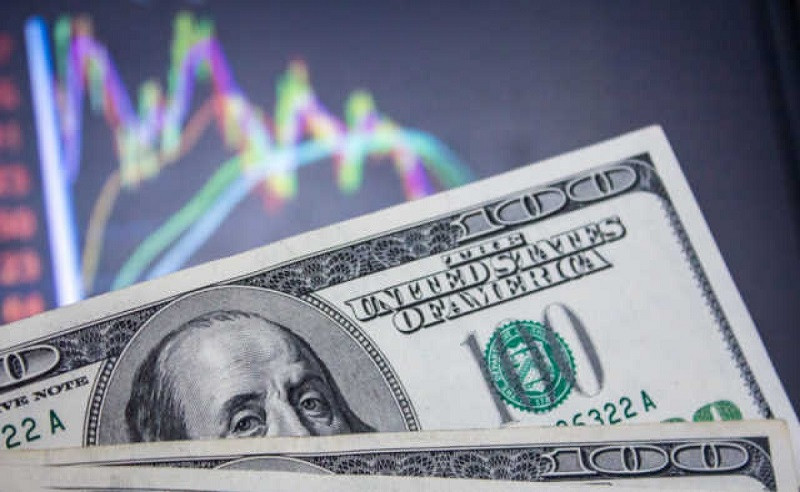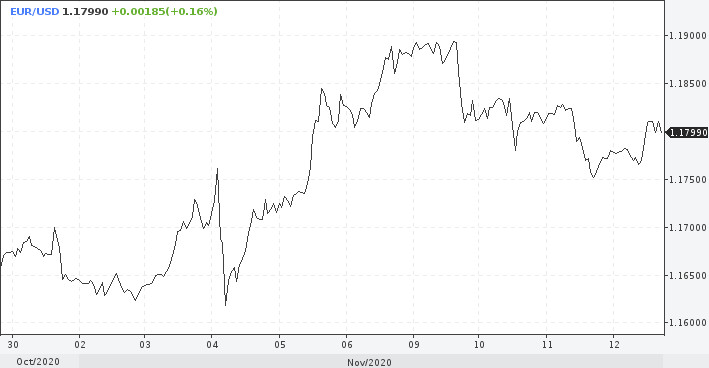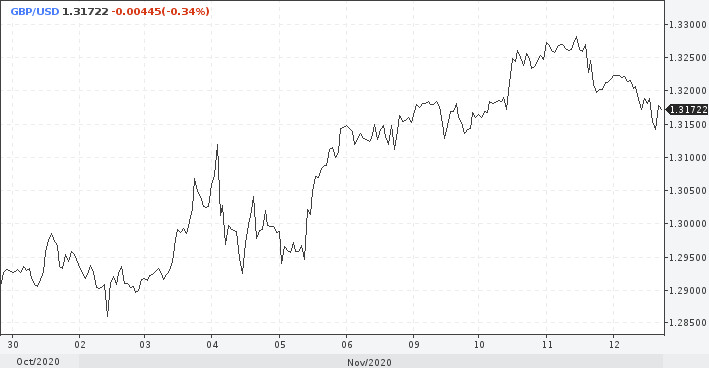
The rally triggered by the introduction of the vaccine seems to have run its course. This can be seen in the dynamics of Pfizer's shares. If on Monday their price reached the highest since the middle of last year – $41, now they have returned to the mark of $ 38.4 – the upper limit of the trading range since May. This means that the markets have negated the importance of a breakthrough in the development of a drug against coronavirus.
The reaction of investors was initially excessive. They raced to the top as if the virus had completed its raid on the world. Judging by the current morbidity figures, this is not the case. This factor forces the markets to descend from heaven to earth and to reconsider their extremely inflated risk appetite.
The dollar is recovering as bullish expectations about the vaccine have not been met. The pandemic is intensifying, and Europe and the United States are facing a difficult winter.
The European economy has already seen an increase in infection and new social restrictions. The German government is cutting its growth forecast for next year. Bars and restaurants are closing in New York before the situation gets worse.
The dollar index bounced back from 92 the day before. On Thursday, it continues to consolidate around the mark of 93, signaling further growth.
It seems that traders staged a premature "funeral" for the dollar, celebrating the victory of Joe Biden. Trump's lawsuits will make life even more difficult for markets, slowing down the promotion of incentives and increasing the pull on the US currency.

In general, trading today is restrained, despite the critical situation with the pandemic. Markets are waiting for speeches from Fed Chairman Jerome Powell, ECB chief Christine Lagarde and Bank of England Governor Andrew Bailey at the banking forum. Financial officials can provoke strong movements in the Forex market.
The euro is still under pressure, from which it did not come out, even despite the general strengthening of demand for risky assets and hopes for an accelerated economic recovery. This is understandable, given that the region's politicians are more inclined to introduce lockdowns than to bring down a wave of infections. In this scenario, the euro simply did not have a chance to grow. The EUR/USD pair left the area above 1.19, where it was on Monday. On Thursday, it reached 1.1760, the area of the 50-daily moving average.

Other major world currencies – the New Zealand pound and the Australian dollar – were affected by the partial recovery of the dollar.
Today, GDP data also put downward pressure on the British currency. The economy grew more slowly than expected in September. This makes the UK lagging behind other major countries in the world in its attempts to recover from the pandemic.
Meanwhile, in the third quarter, gross domestic product expanded by a record 15.5% compared to the previous three months. However, the indicator fell slightly short of the forecast and blurred the positive effect.
Weaker-than-expected data is likely to put the brakes on the pound's recent rally, which should pass the reality check. The uncertainty about Britain's exit from the EU, the growing pressure on the economy from the pandemic and the strengthening dollar will make sterling's position even worse. These are difficult times for pound traders.

It is unlikely that a trade pact between the EU and the UK will be concluded this week. Negotiations will continue and the parties appear to be going to miss their mid-November deadline for a new Brexit deal.
 English
English 
 Русский
Русский Bahasa Indonesia
Bahasa Indonesia Bahasa Malay
Bahasa Malay ไทย
ไทย Español
Español Deutsch
Deutsch Български
Български Français
Français Tiếng Việt
Tiếng Việt 中文
中文 বাংলা
বাংলা हिन्दी
हिन्दी Čeština
Čeština Українська
Українська Română
Română

